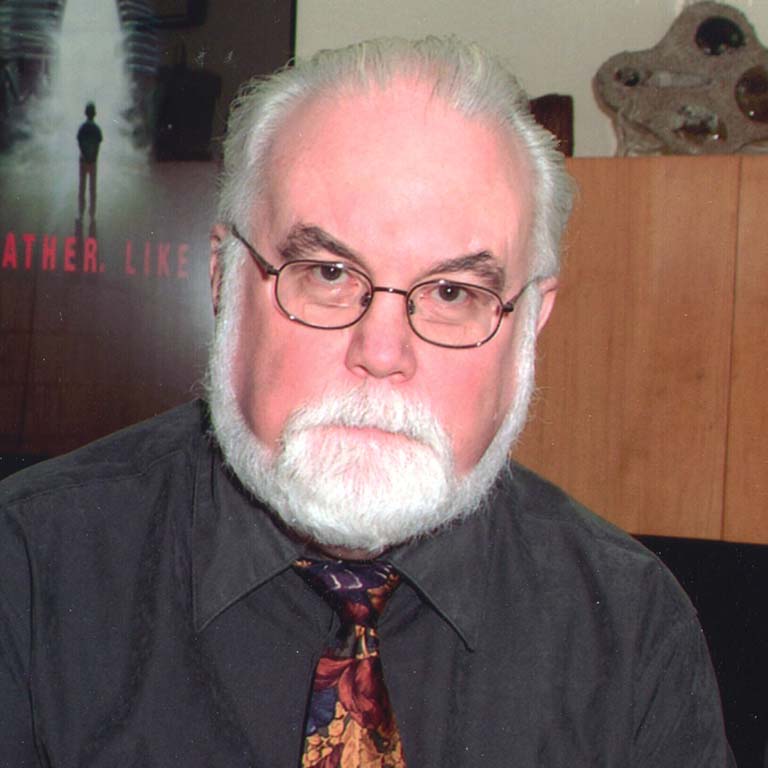- Postdoctoral Fellow, University of British Columbia, Vancouver, 1971
- Ph.D., University of Texas, 1970

Thom Kaufman
Distinguished Professor Emeritus, Biology
(ikh, er, mir, im, zeyn [Yiddish])

Distinguished Professor Emeritus, Biology
(ikh, er, mir, im, zeyn [Yiddish])
Using the fruit fly Drosophila melanogaster, the long-term goal of our laboratory is to contribute to an understanding of the genetic basis of the developmental program of higher organisms. The homeotic genes, which play a crucial role in development, have been our principal locus.
Homeotic lesions cause one portion of the animal to be transformed into an identity normally found in another region. Thus mutations at the Antennapedia (Antp)locus cause a transformation of the antennae of the adult fly into a leg, and lesions in the proboscipedia (pb)gene result in the development of legs in place of the adult mouthparts.
The role of the homeotic loci are best viewed as a series of developmental switches for either/or decisions of cellular fate. The homeodomain, that endows the proteins with DNA-binding ability, indicates that the switch activity of the loci is reflected in their functioning as regulators of specific downstream target genes.
The Search for Downstream Genes. In order to gain further insights into the function of the homeotic transcription factor proteins we have cloned a group of targets of these genes. In the process of our analyses we found one the targets, based on the nature of its encoded protein, to be particularity interesting. We have therefore concentrated our recent efforts on understanding the role of this gene in development.
We have recovered cDNAs that encode a protein of 150 kD and the ORF predicts a novel hydrophilic coiled-coil polypeptide that contains three leucine zipper motifs. Antisera raised against the polypeptide were used to localize the protein to the centrosome and we have called the gene centrosomin (cnn).
We have found that the cnnlocus is expressed throughout embryogenesis as well as post embryonically. In order to define the role of Cnn in the cells in which it is accumulated we have recovered mutations in the gene. Surprisingly screens for cnnIesions have resulted in the recovery of sterile but not lethal mutations. Adult females homozygous for all the alleles are sterile and produce eggs in which the syncytial divisions proceed as far as the twelfth cycle, and embryos fail to cellularize. Examination of the cleavage mitotic figures shows that the embryos exhibit defects in chromosome segregation and spindle organization. Frequently, one observes apparently linked spindles that share poles, indicating that Cnn is required for the proper spacing and separation of mitotic spindles within the syncytium.
Males homozygous for these mutations are also sterile. Examination of mutant testes has shown that in developing spermatocytes, Cnn is required for meiotic cytokinesis. Additionally, axonemal morphology and elongation are abnormal. Since Cnn is also found in the basal body of the developing sperm it would appear that it functions in the organization of the axoneme. Taken together, these results indicate essential roles for Cnn in the organization of the cleavage and male meiotic spindle and cytoskeleton of the axoneme. The fact that apparent null mutations at cnncan complete normal post embryonic development implies that Cnn is dispensable for spindle function after cleavage and that there is a qualitative difference in the centrosome at these different stages of development.
Homeotic genes in Evolution and Development. By using the knowledge we have gained from Drosophila as a genetic framework, we are now able to examine the evolution of developmental processes within the arthropods. One of the most striking features of arthropods is their segmental organization along the anterior/posterior axis. One difference among the various arthropod taxa is the deployment and identities of these segments. Since HOX genes play a pivotal role in segmental identity, it is thought that they are responsible, in part, for arthropod diversity.
We have therefore begun to extend our analysis of HOX genes to other taxa. We have now cloned most of the homeotic genes from several insects and representative species from the Crustacea, Chelicerata and Myriapoda. HOX gene expression patterns in these other arthropods are offering tantalizing clues to developmental processes in this very diverse group of organisms. We have also begun to take a functional approach to studying HOX gene evolution. By using the technique of RNA-mediated gene inhibition (RNAi), we can now determine the functional and regulatory interactions between HOX genes.
Using this technique we have demonstrated that inhibition of the genes Deformed, Sex combs reduced, Antennapedia and proboscipedia in the milkweed bug Oncopeltus faciatus produces homeotic transformations similar to those found in Drosophila. There are however intriguing differences in the O. faciatus transformations relative to what is seen in flies that indicate that the regulatory paradigm for these genes in the Diptera and the Hemiptera has evolved differently.
These approaches will allow us to both study the development of this very diverse group of organisms, and to understand how the process of development evolves.